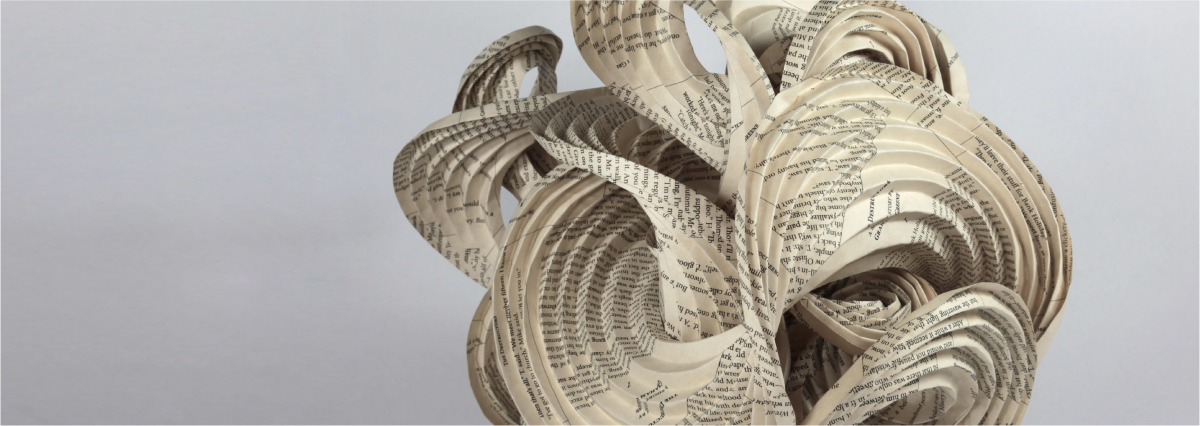A father-son art-science team, Martin and Erik Demaine fold, pleat, and twist paper into powerful sculptural forms that illustrate the intriguing and profound connections between mathematics and origami. Using mathematical calculations, they create works that expand the possibilities of paper folding. Among other accomplishments, the Demaines have pioneered Möbius hypars, a method of folding in which paper is folded along a curved rather than a straight line.
Above the Fold includes selections from their signature abstract curved-crease sculptures, which use modular techniques to increase sculptural size. They have also created large works that incorporate text and Möbius hypars interlocked through space, thus blending art, science, and literature.

